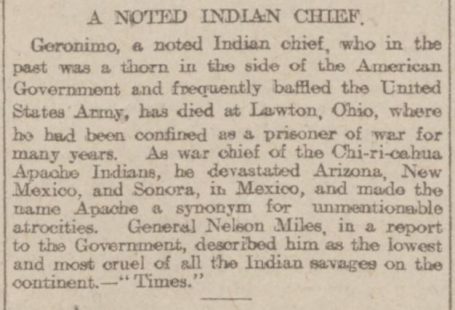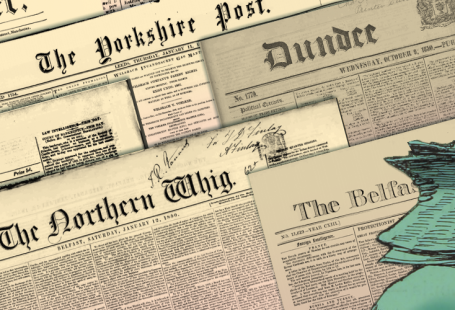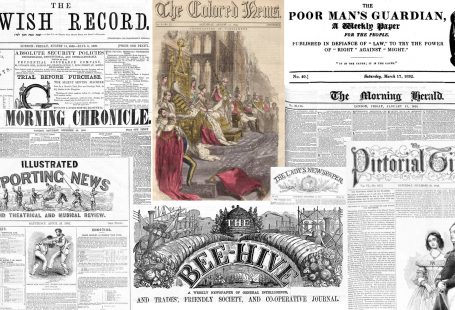When war broke out in August 1914, and again in September 1939, women across the United Kingdom played a pivotal role in the war effort, taking on jobs that we previously seen as the preserve of men.
By July 1916 it was estimated that 750,000 women across Britain had taken up ‘war work,’ working in heavy industries and in munitions factories, working as drivers, as well as nurses and as doctors. This represented a seismic shift in the way that women were viewed, and helped to pave the way for the enfranchisement of women over thirty in 1918.

And when the Second World War broke out, women again were quick to play their part, taking on roles in heavy industry, but also joining the women’s auxiliary services: the Auxiliary Territorial Service (ATS), the Women’s Auxiliary Air Force (WAAF) and the Women’s Royal Naval Service (WRNS). Indeed, in December 1941 women in Britain were conscripted, and were given the choice of either working in industry, or joining one of the auxiliary services.
Our newspapers provide a vital record of women’s war work in both world wars, capturing the varied contributions of women across many different spheres, from nursing to the Land Army, from ship-building to ambulance driving. And to celebrate women’s war work in both the First World War and the Second World War, we’ve picked out twenty incredible photographs from our newspapers that demonstrate the far reaching impact of their amazing contributions.
Register with us today and see what stories you can discover
1. Women Ambulance Drivers and Attendants – July 1916

One of our most important photographic records of the First World War on The Archive is the Illustrated War News, a weekly magazine that was produced by the Illustrated London News from 1914 to 1918 and comprised of 48 pages of articles, photographs, drawings and maps detailing everything to do with the conflict.
The Illustrated War News featured a section entitled ‘Women and the War,’ and it is here that we find some remarkable photographs of women engaged in all types of war work. Pictured above in July 1916 are a woman ambulance driver and a woman ambulance attendant, who are noted as working for the London County Council at the new ambulance station in Bloomsbury, London.
The caption notes: ‘The adaptability of women to work hitherto accepted as a masculine monopoly is one of the changes brought about by war.’ And by July 1916, with the Military Service Act having been passed in January of that year, which saw the conscription of single men aged between 18 and 41, it was imperative for the running of the country that women took on such roles.
2. Women ‘Coalmen’ – October 1916

From ambulance driving to coal-heaving, the Illustrated War News in October 1916 pictured women in Glasgow working as ‘coalmen.’ The article describes how:
In some parts of Glasgow the hitherto unusual sight of strong, healthy women acting as coal-heavers and coal-carters is not infrequent, and our photograph shows how good-humouredly they have taken up the work, thus freeing men for the service of their country.
The Illustrated War News, of course, played its part in propaganda, noting the ‘patriotism’ of the women who were participating in such ‘rough duties.’ The publication explains how the women played their part ‘willingly,’ as they knew ‘that they [were] liberating men, and so doing an act of patriotism.’
3. ‘Girl Fire-Engine Driver’ – February 1917

From Glasgow now to Hampshire, and the resourcefulness of one Isobel Silver. When a fire broke out at Blentworth Hall, near Horn Dean, and ‘no man being available,’ Isobel Silver ‘volunteered to drive the local steam fire-engine from Emsworth to the scene of the outbreak, seven miles distant.’
Isobel, sat on the steam fire-engine, was pictured by the Illustrated War News on 14 February 1917.
4. War Workers’ Recreation – February 1917

With women involved in war work across the United Kingdom, they needed a way to let off some steam. For the women working in munitions factories, they famously participated in football matches, which you can read about here. But for the Red Cross nurses at Middlesex Hospital, they found another diversion: fencing.
The Illustrated War News on 21 February 1917 pictures two nurses ‘having a bout with the foils,’ in order to keep fit indoors, ‘while the winter weather makes out-of-door exercise difficult.’ Also pictured in the same piece are Red Cross nurses ‘sculling with mechanical apparatus.’
5. ‘Women-Workers With The Grand Fleet’ – August 1917

Women’s war work in the First World War saw them working beyond British shores, in France and on hospital ships. This wonderful picture from the Illustrated War News, August 1917, shows ‘nurses from a hospital ship taking the padre for a row.’
6. ‘In A Printing Office’ – October 1917

In October 1917 the Illustrated War News was again praising the ‘adaptability of women,’ noting how their ability to take on ‘the innumerable forms of work which are the direct outcome of the war has almost passed into proverb.’ No longer the weaker sex, women were proving themselves both at home and abroad.
To illustrate this, the publication printed two pictures of the work of the Women’s Army Auxiliary Corps, which was founded in 1917 and later became Queen Mary’s Army Auxiliary Corps. One photograph showed women ‘aiding and abetting combatant officers in their work,’ by ‘waiting upon them in their rest time at the club behind the line.’ The Illustrated War News notes that with their ‘neat brown uniforms’ they lend ‘almost a sense of ‘Blighty’ comfort which is much appreciated.’
The second photograph (above) shows women working in ‘the printing offices, where they have taken up the work with much success.’
7. The Land Army – November 1917

Another important women’s wartime organisation was founded in 1917 – the Women’s Land Army. Set up by the Board of Agriculture to bring women into farming, it was disbanded in 1919 but revived in 1939 as war was once again loomed large on the horizon.
As well as working on the land, women who joined the Land Army also had to work with farm machinery, as this photograph from the Illustrated War News shows in November 1917. The women are engaged in ‘removing a big wheel’ from a motor-tractor.
At The Archive we are delighted to feature the official newspaper of the Women’s Land Army, Landswoman, which you can read here.
8. ‘Women’s Work for Our Dead’ – February 1918

As the First World War entered its fourth and final year, the devastating toll it had taken on the lives of a generation was becoming more and more evident. The Illustrated War News on 27 February 1918 profoundly captured this when it featured a photograph of two members of the Women’s Auxiliary Army Corps ‘tending the graves of our fallen soldiers in France.’
Not only did the Women’s Auxiliary Army Corps tend the graves of the dead, they offered ‘information’ to those visiting the cemeteries, a duty that they discharged ‘with commendable care and sympathy.’
9. ‘Hold The Home Front’ – March 1918

During the First World War one woman became something of a figurehead for the home front: Queen Mary. Throughout the war she visited many organisations and helped to boost morale. On 27 March 1918 the Illustrated War News pictured the ‘girls of the Land Army at Buckingham Palace,’ where they were reviewed by Queen Mary.
The accompanying text declared how the ‘women of England are justifying the assertion that physically a woman is as strong as a man, and capable of doing the unexpected and valuable work which she has been asked to undertake since the Great War enlisted the services of so many men.’
And on 19 March 1918 some of these strong women from the Women’s Land Army marched to Buckingham Palace. Part of the procession were ‘forester girls, motor-tractor girls, and forage girls,’ some of whom spoke with Queen Mary. According to the Illustrated War News, the Queen showed ‘special interest in the motor-tractor girls, two of whom hold the Wiltshire County Championship for Ploughing.’
10. ‘Women of Pervyse’ – April 1918

Our final selection for the First World War comes from The Bystander, and it shows the ‘Women of Pervyse,’ Baroness de T’Serclaes (also known as Elsie Knocker) and Mairi Chisholm. Elsie and Mairi were two of the most photographed women of the war, as they worked as nurses and ambulance drivers on the Western Front in Belgium, saving many lives and winning medals for their bravery.
The caption of their photograph in The Bystander relates how ‘both of these ladies have been awarded the Military Medal for their devoted work.’ Unfortunately, both Elsie and Mairi were suffering from gas-poisoning at the time of the publication of the photograph, a ‘German gas-shell having burst right in the door of their dug-out.’
11. ‘Women Help To Run The War’ – September 1939

As war again broke out in Europe, women were called upon to bolster the home front once more. Newspapers of the day were quick to pick up on this, The Sphere on 23 September 1939 publishing a feature entitled ‘Women Help To Run The War.’
It showed two women from the Voluntary Ambulance Service painting the kerbside in London, as those on the home front now faced a new kind of threat: air raids. To mitigate this threat, blackout measures were put in place, hence why these two women were painting the kerbside outside of their ambulance station – so they could ‘find their way more easily during the black-out.’
What is striking about this particular photograph are the men who appear to be going about their daily lives quite normally, one posting a letter and another crossing the street, whilst the two women ready themselves for the air raids that were to come.
12. ‘The First British Women Drivers To Go To France’ – December 1939

The first British forces, the British Expeditionary Force, began to travel to France in early September 1939. Following behind them a few months later were a group of ‘women drivers’ from the Mechanised Transport Training Corps. The Sphere on 23 December 1939 described them as a ‘body of publicly minded women who are all expert drivers and mechanics.’ Paying their own subscriptions, they provided their own cars and uniforms, and they had been working for the Red Cross and for the Air Raid Prevention (ARP) authorities prior to being called up to travel to France to ‘act as transport to a mobile hospital unit under the French Government.’
The women from the Mechanised Transport Training Corps were the ‘first body of women drivers to be sent overseas since the beginning of the war,’ and The Sphere pictures them being inspected at a London barracks before their departure.
13. ‘An Exclusive Club For Girls In The Services’ – March 1940

As many women entered various wartime services, such as the ATS and the WRNS, a new club in Chelsea was opened for women serving in such organisations. The Sphere, 23 March 1940, writes how the hope was for the club to ‘hold dances and other functions to which the girls may bring their boy friends,’ picturing Pauline Gower singing at a piano.
Pauline was a member of the Air Transport Auxiliary, alongside the woman leaning on her shoulder. They had the responsibility of ferrying aircraft from factories to airfields across the country. At that time, there were only a dozen women serving in the organisation, which you can find out more about here.
14. ‘Women at War Work’ – June 1942

As well as joining the services, women in the Second World War also worked in a variety of different industries, all contributing to the war effort. In June 1942 The Sphere captured women at work in different roles across the country: from ‘helping in the construction of a tanker’ to ‘making steel for tanks and ships’ in a Scottish foundry.
The publication also published a picture of ‘girl rivet-heaters at work with men,’ at an unnamed British shipyard. The Sphere noted that at the shipyard there had been ‘a great influx of women labour’ – Britain’s own equivalent to Rosie the Riveter.
15. ‘Women In The London Gasworks’ – October 1942

In October 1942 The Sphere published another striking photo of women working in heavy industry. This time it depicted Mrs. Yeo, whose husband was serving in the Army, working at the South Metropolitan Gas Company in London.
Mrs. Yeo, who had previously worked at a hair-cream factory, and had three children under the age of thirteen, is shown ‘backing up a charge of coal.’ The Sphere notes that the South Metropolitan Gas Company, alongside ‘other big utility undertakings,’ is ‘now employing a number of women to take over the jobs of men who have been called up.’
16. A Woman Mayor – October 1942

Meanwhile, Mrs. Lilian F. Evans of Dagenham was performing a different kind of war service. In October 1942 The Sphere reported that Lilian Evans was due to be made Mayor of Dagenham on 9 November 1942, the town’s first woman mayor. She was set also to be the first ‘chief’ of the Women’s Voluntary Service to become a mayor, as well as being ‘the first woman mayor to ride a tricycle.’
Lillian Evans used her tricycle, which was a gift from the British War Relief Association of Northern California, to ‘take tea to bombed people in her district,’ something she vowed to continue to do once she became mayor.
17. ‘Off-Duty Moments’ – January 1943

As in the First World War, publications in the Second World War captured women during their down time. In January 1943 The Sphere photographed ‘ATS girls in their off-duty moments,’ picturing four members of the organisation in their barrack room in Wales, which they called ‘The Beehive.’
One woman can be seen reading, whilst one possibly paints her toenails, and another is shown tidying something on her camp bed. Behind them is the ‘typical ATS art gallery,’ providing ‘a good idea of the sort of subjects in which some members of the ATS are interested.’
18. ‘Women’s Work On The Railways’ – April 1943

During the Second World War women were pivotal in keeping the transport infrastructure moving. From working on the canals, which you can read about here, to working on the railways, women kept Britain moving in spite of the war.
In April 1943 The Sphere pictured women at work at a Southern Railway engineering depot, which employed 80 women out of a total staff of 130. Dubbed by the newspaper as ‘Jills of all Trades,’ these women were employed to do ‘all kinds of heavy work, such as lifting bolted crossings, switches and stock rails on to large planing machines, and using big circular saws.’
The women above are pictured ‘pushing a bogie-load of adzed and bored sleepers into the metal cylinder for creosoting.’ The Sphere notes how many of the women had ‘husbands in the Forces or the shipbuilding industries,’ whilst some were ‘widows with young children, whilst others have been bombed out of their homes.’
19. ‘The Youngest Woman Stoker In The Country’ – May 1943

And in May 1943 The Sphere featured within its pages ‘the youngest woman stoker in the country,’ seventeen-year-old Marjorie Fitch. Marjorie, who was from Norwich, attended ‘to all the complicated work in connection with two boilers at a factory.’ Having ‘earned the unstinted praise of her employers,’ Marjorie also cleaned and maintained the boilers under her care.
Having previously worked in a shoe factory, Marjorie came to work as a stoker ‘when available man-power for the work became short.’
20. ‘Australia’s Women Also Serve’ – February 1944

It wasn’t just British women that threw themselves into the war effort in the Second World War, with women across the world all taking on new and demanding roles. The Illustrated London News pointed out how ‘Australia’s Women Also Serve‘ in February 1944, picturing Australian women engaged in a variety of different roles, from zoo keeping to taxi driving, from working in the Land Army to working on the railways.
The newspaper also showed women working as ‘posties,’ women having ‘replaced men in most branches of postal work.’
That’s all of our twenty incredible photos of women’s war work from both the First and Second World Wars – what photographs and stories can you uncover about women’s wartime service in our Archive?






1 comments On Twenty Incredible Pictures of Women’s War Work From Our Newspapers
Pingback: The British Newspaper Archive Blog » Hot Off The Press – New Titles This Week ()